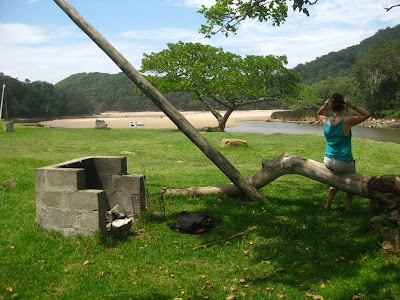Whoever draws the borders in South Africa has an easy job. I assume the process is longer and more involved than simply swatting at a map with a felt pen, but all the boundaries through which we've passed, both interprovincial and international (as this entry comes to you from the Mountain Kingdom of Lesotho) have been lessons in contrast. The first border we crossed (and it's the first that's most memorable, don't you find?) was from the Western Cape – home to metropolitan Cape Town, the moneyed Winelands, and the aforementioned Garden Route – to the Eastern Cape, South Africa's poorest province, and for good reason.
During apartheid years, much of the province was cordoned off as an independent nation, the Transkei: a 'homeland' where millions of black South Africans – those unable to contribute economically – were relocated, essentially making them foreigners in their own country. It was reincorporated in 1994, though the area is still over-populated, with little industry and infrastructure, and its inhabitants, mainly of the Xhosa tribe, live in traditional round thatched-roof huts. As we passed into the Eastern Cape the difference was almost immediate: the dense mountains, forests and numerous gas stations gave way to shallow hills of grassy farmland, dotted with livestock, small villages, and women with various cargo balanced on their heads. Moving into the Transkei (the old border post sits across the Kei River, literally 'trans Kei') meant another shift – less money, more huts, and even more livestock, often on the road. (A favourite joke here is the Transkei Big Five: goats, sheep, cattle, horses and donkeys.) Both Nelson Mandela and his successor Thabo Mbeki grew up in the Transkei, and the house-arrest compound where Mandela spent the final years of his sentence sits not far from the highway – we passed it on the 20th anniversary of his release.
In the Transkei we spent our time on the Wild Coast, a section of coastline between East London and Port Edward that, with an unfortunate thank-you to its disenfranchised past, is so pristine and undeveloped one forgets they're in the 21st century. The Africa we felt we'd been missing was finally at our toes: an endless exchange of rocky cliffs and empty beaches in both directions, with barely a four-sided building or stretch of pavement in sight. The Indian Ocean is warm, the beer is cheap, and an ATM is hard to come by.
Looking both directions on Cinsta Beach
Private 'safari tent,' Buccaneer's Backpackers, Cintsa
The cows come down to the beach in the afternoons to cool off and deter ticks, who don't like the salt in the sand. There are dogs everywhere, and if you're a well-fed Transkei dog you may be the happiest dog alive. The dogs here have owners, but no master. We often went for a walk and unwittingly brought a stranger's dog along with us. That said, there are innumerable strays, many in rough shape.
Lonely beach cow in Port St. John's
A village dog near Bulungula.
On a hike to The Gap, a rock formation not far from Second Beach, Port St. John's. On this trail we encountered people headed the opposite direction, as there is a village on top of the hill and this trail is part of their everyday commute. Beats the Massey Tunnel.
After crossing The Gap.
All our accommodation was in or near small villages, but moving between them often required a two-hour drive inland to Mthatha, the former Transkei capital, and back out again, as only hiking trails or four-by-four roads connect each stop. The towns in the area serve mainly as supply outposts for the villiages, often no more than a general store, a bottle (liquor) store and a row of grubby vendors' booths. The poverty on the Wild Coast is apparent, but the people are cheerful and welcoming, and the little tourism the area gets looks to be mostly (but not completely) beneficial.
A cloudy day at the cliffs in Coffee Bay. Goats and Donkeys graze dangerously close to the edge.
On a hike to Hole In The Wall from Coffee Bay. Our guide was Joseph, who grew up in the village and now works at the hostel, leading daily excursions to points of interest.
Hole In The Wall
Joseph bought a few fresh crayfish from some local men and cooked them over the fire. Technically they're out of season and it's illegal to catch them. Alanna and I, not wanting to be complicit in the depletion of the ocean's natural resources, only tasted a little bit.
One hostel employee in Port St. John's (you may remember him as our braai friend from the last entry) says he's been searching for a decade and he's found his paradise, there in the Transkei, next to the beach. It's easy to see why: there's a special atmosphere to the Wild Coast, a rhythm that moves through the virgin scenery and into its people and makes it a hard place to see in your rear-view. Its remoteness and its unhappy history are both a blessing and a curse, and as a tourist, despite the industry's efforts and assurances, one can't help but feel only a little intrusive. But it is a healthy feeling, I think, and merely a symptom of being somewhere so precious.
































